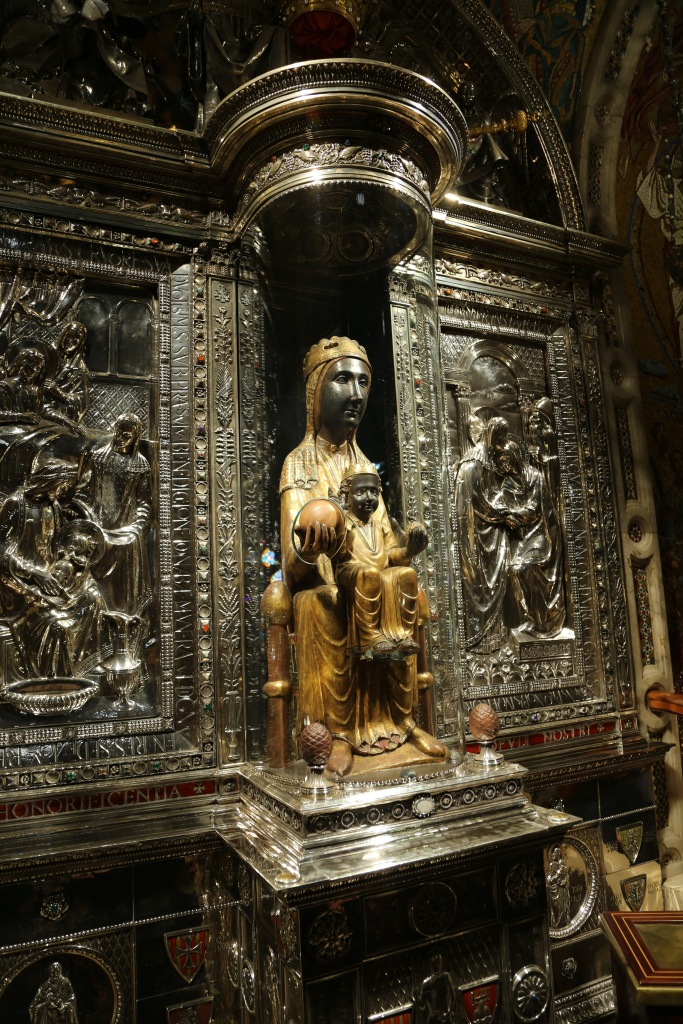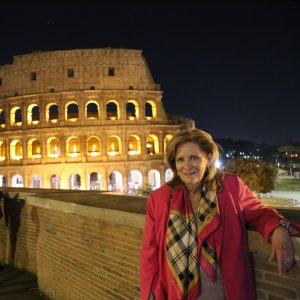
By Debora Ragland Buerk
The Write Stuff
Looking at life from a different point of view.
Dedication: To all my contemplative friends in Selah and anyone trying to live a more contemplative life in our hectic, violent world. – Debora
Destination: Barcelona, Spain.
Barcelona is a vibrant city that boasts a rich history, lively arts and culture, and inviting outdoor spaces. This city grew around Barcino, one of Europe’s most extensive Roman settlements. The oldest part of the city, the Barri Gotic or the Gothic Quarters, has picturesque medieval lanes that reveal remnants of the Roman city wall. Its treasures include the neo-Gothic Barcelona Cathedral, the medieval Jewish district of El Call, and the Romanesque Church of Santa Maria del Pi. The charming, narrow streets have been infused with new life as modern cafes and boutiques have opened up. In the evenings, diners can enjoy the atmosphere at restaurants along the perimeter of the elegant Royal Plaza.
We spend our day outside of Barcelona, deep in Catalonia atop a 4,000 foot mountain at the Santa Maria de Montserrat Abbey.

Santa Maria de
Montserrat Abbey
Santa Maria de Montserrat Abbey is a monastery of the Order of Saint Benedict. It is situated on the mountain of Montserrat in Monistrol de Montserrat, Catalonia, Spain. The monastery was founded in 1025 and has been reconstructed between the 19th and 20th centuries. It is famous for enshrining the image of the Virgin of Montserrat. Today, the abbey is still in use and has a community of around 70 monks.
The Abbey is located 30 miles northwest of Barcelona and sits atop the 4,000-foot mountain of Montserrat. Footpaths from the monastery lead to Montserrat’s highest point, Sant Jeroni. From Sant Jeroni, almost all of Catalonia can be seen, and on a clear day, the island of Mallorca is visible.
Montserrat plays a significant role in Catalonia’s cultural and spiritual life. It is Catalonia’s most important religious retreat, and groups of young people from Barcelona and all over Catalonia often make overnight hikes to watch the sunrise from the heights of Montserrat. The Virgin of Montserrat is Catalonia’s patron saint and is located in the Sanctuary of the Mare de Déu de Montserrat, next to the Benedictine monastery nestled in the towers and crags of the mountain.
Basilica of Montserrat



The Escolania, Montserrat’s Boys’ Choir, is one of the oldest in Europe and performs during religious ceremonies and communal prayers in the Basilica. The Basilica houses a museum with works of art by many prominent painters. The Publicacions de l’Abadia de Montserrat is a publishing house that is one of the oldest presses in the world. Its first book was published in 1499.
The origins of Christian life in Montserrat go back to the times of the first hermits. The first mention of Montserrat appears in 888 when Wilfred the Hairy, Count of Barcelona (840-897), donated several lands to the Monastery of Ripoll. These included Montserrat’s churches, those on the mountain, and those at the bottom. Before the monks of Ripoll began to occupy these churches on Montserrat, another group of monks took up dwelling on the mountain led by Abbot Cesari in 942 at the Church of San Cecilia. This abbot built a new church that was more appropriate for the monastic liturgy and has largely survived to the present. In 1025, under Abbot Oliba (971-1046), monks from Ripoll built the Monastery of Santa Maria de Montserrat beside the original Church of Santa Maria.
The monastery continues to expand and build through the medieval and baroque periods, each era’s architectural style leaves its mark. However, the contemporary period of the monastery is marked by tragedy. In 1811, during the War of Independence, Napoleonic troops sacked and burned Montserrat. Tragedy strikes again during the 20th century with the deaths of 23 monks during the Spanish Civil War and the dispersal of the community.
The monastery has been the destination of pilgrims since the times of the first hermits. Legend says that the Apostle St. James worshipped there. Another famous pilgrim was St. Ignatius, whose spiritual practices are observed today by Christians of all faiths. In 1982, Pope John Paul II made a pilgrimage to Montserrat.
Montserrat is preparing to celebrate the thousandth year of its foundation in 2025. The present community is formed by sixty monks devoted as those in the past to a life of prayer, work, and welcoming other pilgrims who come to the Sanctuary each year. The monks follow the same Benedictine life as St. Ignatius. Every day, the monks come together six times to celebrate the Liturgy of the Hours and to take communion. Many pilgrims also attend these services.

Photo by Larry Buerk © 2024.
Our Lady of Montserrat, the Black Madonna
The centerpiece of the Sanctuary is the image of Our Lady of Monserrat, known as La Moreneta (the Black Madonna) due to her dark color. The image is a gilded polchrome Romanesque carvomg dating to the late-12th centry. Though the hands of both Mary and the Baby Jesus had to replaced as a consequence of the damage caused during the Napoleonic War (1811-12).
Upon seeing the Black Madonna I realized I had seen an image of her before while I was researching a book for the Selah Center, Wondrous Libght through Advent & Christmas (© 2021, available from Amazon.com). When I did the research it didn’t stick with me where the Madonna was located so I was pleasantly surprised to get to see her up close during a tour of the Basilica.
The monastery is rich in history, architecture, art, and books, and is still a popular destination for pilgrims. After six hours, our time on Montserrat is up, and we must drive back to Barcelona. Tomorrow, our destination is Montpellier, France.
Debora Buerk
Looking at life from a different point of view.
The Write Stuff


